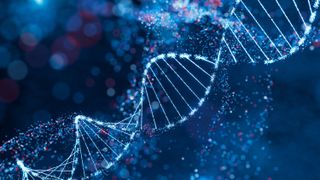A new DNA storage method has emerged which seeks to revolutionize the existing methods of encoding data on strands of DNA. A team of researchers from Peking University and three other research institutions recently published their findings on using DNA methylation to selectively mutate “epi-bits” on pre-existing strands of DNA. Simply put, it works, writing faster than other DNA methods, but still falling short of real-world utility for now.
DNA is incredibly informationally dense. DNA can hold up to 215 petabytes of data per gram based on our most efficient DNA encoding processes, but writing and reading data to DNA is both very expensive and very slow. The most common processes to put data on DNA are based on “de novo” synthesis; making custom DNA sequences from scratch. The new epi-bit method instead writes to existing strands, in theory saving time and money in the process.
The epi-bit method uses a natural process called "DNA methylation," emulating the epigenetic evolution DNA strands undergo during life. Researchers crafted 700 DNA “movable types” from nucleic acids, emulating a movable-type DNA printing. This method can be achieved manually or automatedly; researchers were able to print and recall images of a Chinese tiger rubbing (16,833 bits) and a panda image (252,504 bits, or 31.5 kilobytes) automatedly with a speed of 350 bits per reaction.
Data is written and stored with a DNA barcode system; DNA barcodes mark where sections of data are stored and can be retrieved with some level of speed and accuracy. Writing to the DNA manually is also an easy process, even for non-experts. A bespoke data storage service called iDNAdrive was used by 60 volunteers without biolab backgrounds, and all were able to manually encode 5,000 bits of text data.
This DNA storage method takes the existing perks of DNA storage, its long-term stability and density, and adds on programmability and scalability. However, it still has a long way to go before it can make DNA storage useful at a useful scale. Writing the tiger rubbing and panda image onto DNA took "approximately 40 bits/second." For context, an average 1TB HDD drive is rated for 160MB/s write speeds, or about 30,000,000 times faster than the epi-bit method. But the price of epi-bit encoding is theoretically ten times lower than de novo encoding since only the proverbial “pen and ink” need to be bought rather than birthing new DNA from scratch.
With a snowballing positive reception from its field, the epi-bit method may win out as a contender for pushing DNA data storage closer to commercial reality. An ever-growing field of DNA storage startups is hungry for faster writing tools as they attempt to establish DNA data archives and other interesting products, like Biomemory’s $1,000 for 1KB DNA storage card.

 10 hours ago
3
10 hours ago
3






:quality(85):upscale()/2024/10/24/034/n/49352476/77b7cf81671add0adc63a2.54797453_.jpg)


 English (US) ·
English (US) ·